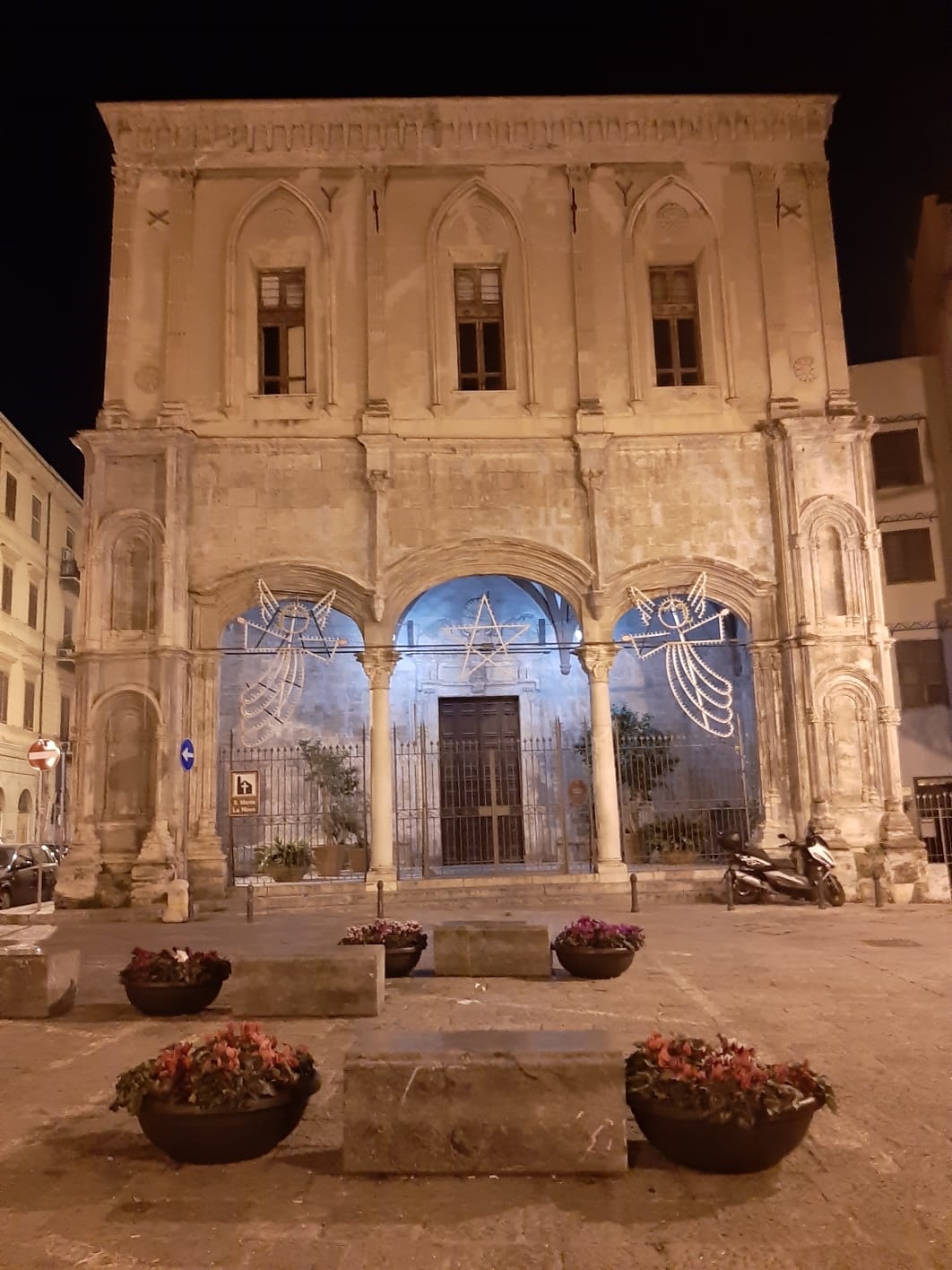
Read English version
Nelle navate e nellabside sono ben visibili decorazioni a stucco attribuite a Procopio Serpotta e databili alla seconda metà del 700. Interessanti opere sono conservate nella chiesa: nella navata di sinistra troviamo presso lingresso una tavola in ardesia dipinta con Cristo e la Vergine, ascrivibile al tardo Cinquecento. Nella prima cappella è la tela della Vergine e S. Rosalia, attribuita ad Antonio Manno. Seguono un crocifisso ligneo del XVIII secolo e la Madonna di Monserrato con i SS. Ninfa, Antonio Abate, Nicola di Bari e Sebastiano (1774) di Antonio Manno. Sullaltare maggiore si trova lImmacolata di Pietro Albina (1623) e infine il Ritrovamento della Croce (1592-95) di Giulio Musca. Nella navata destra, nella terza cappella, è il Transito della Vergine, tela del Manno del 1774. La successiva cappella conserva tre monumenti funebri manieristici di esponenti della famiglia Giancardo e una interessante tela del secolo decimottavo. La piazza nella quale sorge la chiesa deve il suo nome al fatto che ivi sorgeva, fino al 1860 circa, la trecentesca Chiesa di S. Giacomo la Marina, demolita in seguito ai danni subiti per i bombardamenti borbonici. Una finestra di essa si conserva in atto nel primo cortile del Museo Archeologico Regionale
Indirizzo: Piazza San Giacomo La Marina
The church was erected as an oratory, alongside with a small hospital, in 1339. The construction of the new church was decided in 1522. The works started in 1534 and lasted for many years, so the building displays an interesting mixture of styles.The lower part of the façade is made up of a polycentric arcade loggia which, as a structure, recalls the church of S. Maria della Catena. The interior displays a longitudinal body, divided into three aisles with columns supporting round arches, and it is joined up with a centric space of evident vertical development, consisting of the octagonal platform covered by a dome, designed by Giorgio Di Faccio and added in1568.
In the aisles and in the apse there are stucco decorations attributed to Procopio Serpotta and dated to the second half of the 18th century. Interesting works are preserved in the church: in the left nave, at the entrance, there is a slate table painted with Christ and the Virginis of the late sixteenth century. In the first chapel you can see the painting of the Virgin and S. Rosalia, attributed to Antonio Manno. Then there are the 18th century wooden crucifix and the Madonna of Monserrato with the Saints Ninfa, Antonio Abate, Nicola di Bari and Sebastiano (1774) by Antonio Manno. On the higher altar you can appreciate the Immaculate Conception by Pietro Albina (1623) and over the altar the Discovery of the Cross (1592-95) by Giulio Musca is noteworthy. In the right aisle, in the third chapel, there is the Transit of the Virgin, the canvas by Manno created in 1774. The next chapel houses three funerary Mannerist monuments of the Giancardo family members and an interesting canvas of the eighteenth century. The square where the church stands, owes its name to the fact that there used to be the 14th century Church of San Giacomo La Marina until about 1860, demolished after the damage due to the Bourbon bombing. A window of this demolished church is preserved in the first courtyard of the Regional Archaeological Museum.
Address: Piazza San Giacomo La Marina
